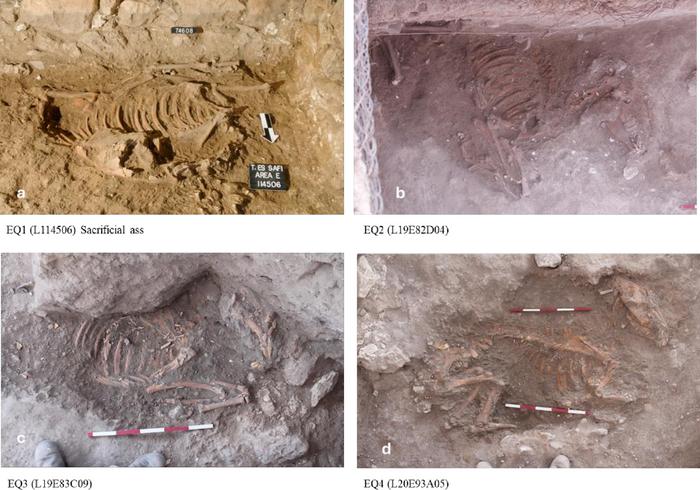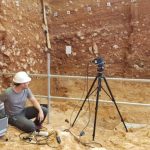Egyptian donkeys may have been incorporated into ritual burials – while local donkeys were part of the menu – in the Early Bronze Age at Tell eṣ-Ṣâfi/Gath, in present-day Israel, per analysis of four complete donkey skeletons and other remains
Abstract from the paper
Archaeological excavations of an Early Bronze Age III (c. 2900–2600/2550 BCE) domestic neighborhood at the site of Tell eṣ-Ṣâfi/Gath, Israel, uncovered four complete skeletons of young female donkeys that were buried immediately below house floors as ritual foundation deposits. Multi-isotope analyses (carbon, oxygen and strontium) of their teeth document that each of the donkeys was born and raised in Egypt before being brought to Tell eṣ-Ṣâfi/Gath where they were slaughtered and buried beneath house floors in a non-elite domestic neighborhood. In contrast, isotopic analysis of teeth from a single isolated donkey mandible and additional sheep and goat teeth that displayed evidence of being used for food consumption and not associated with a complete burial, identify the donkey as born and raised among local livestock in the vicinity of Tell eṣ-Ṣâfi/Gath. The intentionally buried of specifically imported and highly valued young jennies reveal what appears to be a ritually charged characteristic when constructing domestic residences at the site.

Author countries: U.S., Canada, Israel
Funding: The research was funded by the Social Science and Humanities Research Council of Canada (Grants #895‐2011‐1005; and 410-2009-1303). The funders had no role in study design, data collection and analysis, decision to publish, or preparation of the manuscript.
Materials from PLoS ONE.


